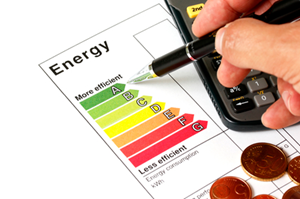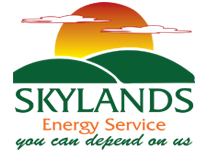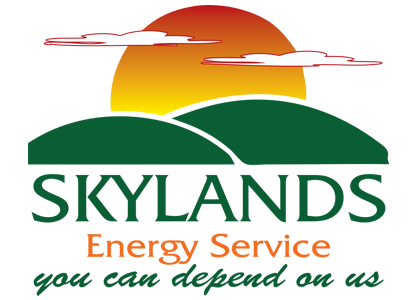 Americans used 97.7 quadrillion British thermal units (BTU) of energy in 2015, reports the Energy Information Administration. The top five uses for energy in the United States include the following ranked from greatest to least:
Americans used 97.7 quadrillion British thermal units (BTU) of energy in 2015, reports the Energy Information Administration. The top five uses for energy in the United States include the following ranked from greatest to least:
- Generation of electricity
- Transportation
- Industry
- Residential usage
- Commercial usage
The Department Of Energy has responded to this large consumption by urging citizens to buy and use appliances that are more energy efficient. Air conditioning systems are one of the major energy users in American homes. Many homes were equipped with standard air conditioning systems at construction, but there are high efficiency models available.
SEER: Energy Efficiency Rating
Table of Contents
Air conditioner efficiency is measured by the Seasonal Energy Efficiency Ratio (SEER). This ratio measures the cooling efficiency of the air conditioning system. High efficiency systems generally earn a high SEER ratio. The Environmental Protection Agency began requiring all brands of air conditioning systems to have a SEER ratio of 14 or higher, beginning January 1, 2015. Before that time, the EPA required a SEER ratio of 13 or higher. Consumers should know that either one of these numbers is very low. Some modern cooling systems have earned a rating of 30.
When buying an air conditioning system, you can expect a larger initial investment for a higher SEER rating. On the average, each point on the SEER scale increases the cost of the unit by $1000. You can find the SEER rating of units displayed on a yellow Energy Guide label that the manufacturer attaches to the unit. This label is displayed prominently on the unit.
Comparing Heat Pumps And Air Conditioners
There is no functional difference between a heat pump and an air conditioner when the heat pump is in cooling mode during the summer months. An air conditioner takes heat from inside the house, by means of a refrigerant, and expelling the heat outside. this process is cooling the air inside the home.
What makes a heat pump different from an air conditioner? A heat pump can be reversed by means of a device known as a reversing valve. This allows the heat pump to reverse the flow of refrigerant. What does this do? Essentially, it exchanges the outside unit with the inside unit and vice versa. In layman’s terms, this allows a heat pump to cool your home in the summer and heat it in the winter.
Basically, during the summer a heat pump and an air conditioner are virtually the same thing. The real differences arise in the winter heating months.
Benefits Of Updated Systems
 Modern cooling systems offer features that improve the comfort inside the home where they are installed. For example, some units offer a variable speed fan. This feature improves the efficiency of the system as it cools the home but does not require you to sacrifice your comfort. High efficiency systems also provide better regulation of humidity levels than standard cooling systems. They use a continuous blower system that circulates the air throughout the day. In contrast, older systems used an intermittent blower and were less effective at removing humidity from the air.
Modern cooling systems offer features that improve the comfort inside the home where they are installed. For example, some units offer a variable speed fan. This feature improves the efficiency of the system as it cools the home but does not require you to sacrifice your comfort. High efficiency systems also provide better regulation of humidity levels than standard cooling systems. They use a continuous blower system that circulates the air throughout the day. In contrast, older systems used an intermittent blower and were less effective at removing humidity from the air.
If you currently use a cooling system that cools with an on/off circulation system, you are familiar with the very cold blast of air when the blower first starts. This blast of air makes occupants of the home less comfortable. However, high efficiency cooling systems create less variation in the temperatures in the home. These systems offer a second benefit of reducing the number of system breakdowns. Eliminating the on-off cycling reduces the wear and tear on both the blower and compressor. As a homeowner, this benefit ensures you stay comfortable without breakdowns and saves you money on the cost of air conditioning repairs. If your home does not currently have air conditioning, you can install a modern ductless system for efficient cooling without relying on ducts.
When Is It time To Upgrade Your AC System?
Comparing Single Stage And Variable Speed Cooling Systems
Forced air air conditioning systems use a fan or blower unit to push the air through the ducts. Older systems used a single stage motor that was either pushed the air at full speed or turned off once the temperature reached the setting on the thermostat. Once the system shut down, the indoor temperature starts to increase until the thermostat triggered it to start again. This temperature cycle made for inefficient cooling of the space.
Adding two-stage motors to AC units helps to solve this problem. These systems offer a fan or blower that operates at both high and low speeds. Such units blow at a high speed to reduce the temperature to the setting initially, but then lower their speed for maintaining the set temperature with less cycling. This feature also helps to reduce the hot or cold spots in the home while improving energy efficiency.
More recently, manufactures have traded the two-stage motor for a variable speed blower or fan for circulating the air. The variable speed motor adjusts to operate at a wide range of speeds. These units eliminate cycling that is common to the single speed motor and to a lesser extent, the two-stage motor. Some of these systems allow users to adjust the temperature in increments of 0.5 degrees, but also reduce energy consumption by 80 percent, when compared to the single stage cooling system. Variable speed air conditioning systems also reduce air pollution in the home, by filtering the air more frequently than the older types of systems. While the initial expense is more, the cost is often recovered during the first few years of use.
Request a free, No Obligation, In-Home Estimate For A New AC System
Comparing High Efficiency vs Standard Air Conditioning
High efficiency systems provide more benefits than standard air conditioning systems. They provide greater energy efficiency and eliminate cycling, which results in less noise. They provide better dehumidification and cooling without making residents less comfortable. You can reduce cooling costs with a high efficiency air conditioning system. While you can expect a higher initial cost, you can get an excellent return on the investment for a new system.
Download a Free Savings Calculator To Determine Your Energy Costs Savings
Skylands Energy Service has been providing trusted heating and cooling services for many decades. We install, maintain, and repair all makes and models of air conditioners. We can install a new energy efficient air conditioning system in your home. This reduces your home cooling expenses and while making your home feel much more comfortable. Call us today to discuss your air conditioning needs with one of our specialists!
Contact us now at (908) 707-1776 to find out more!

